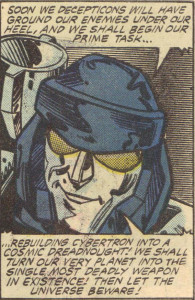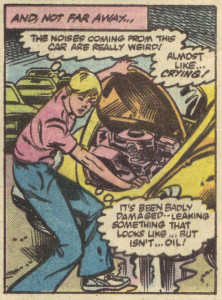This is the first in what will hopefully be a series of articles re-visiting Marvel’s version of Transformers, covering the 80 issues released in America and the 4-issue miniseries “The Headmasters.” Images are scanned from my personal copies of each comic.
It was a world transformed.
In 1984, Marvel comics began a series of comics that would be the very first representation of Transformers in fiction, edited – and soon written – by Bob Budiansky, the same man who named most of the early characters and wrote the bios printed on the toy packaging.
Though I feel the animated cartoon that soon followed became, for most folks, the definitive version of the G1 story, the comic rumbled along far longer than the ‘toon lasted and morphed into its own totally unique version of the mythos.
I was a kid in the early 1990s, when Transformers was in decline, and my first introduction to the property was by way of an old Marvel comic I found at my local library. I spent much of my childhood scavenging yard sales, book stores, and flea markets for signs that Transformers once existed, and it oftentimes paid off in the odd issue of the Marvel comic, usually far distant in the chronology from any other that I owned. So I pieced this story together in my mind and it became just as cherished as the cartoon that I also adored.
Like a lot of earlier Transformers fiction, Marvel’s Transformers – particularly the U.S. run taken by itself – is an easy target for criticism. Art quality is all over the place, story arcs are picked up and discarded just as quickly, power levels of characters vary by the newness of their toys, the coloring is kind of lazy…
But I’d like to focus less on that and more on what type of world was, consciously or not, built throughout this run. The story that’s told, once things were all said and done, is in my opinion one of the bleakest ever told in any Transformers universe.
That’s something that I’ll return to as we go through the series. For now, let’s talk about about “The Transformers,” written by Micronauts and Rom: Spaceknight veteran Bill Mantlo, non-Karate Kid Ralph Macchio, and the aforementioned Bob Budiansky. Pencils were by Frank Springer, who would return for the later Headmasters miniseries.
This issue tells the now-familiar G1 tale of Autobots and Decepticons fleeing from Cybertron, crashing on a pre-historic Earth, then waking up in the present to resume fighting. But right off the bat there are several distinct differences from the Sunbow version of the story. Here are a few:
- The war on Cybertron has actually knocked it out of orbit, sending it careening through space. The physics of this are probably hilarious, but sadly I don’t think it’s ever revisited in the story.
- In the cartoon, the planet is bled of energy and the Autobots flee to find it somewhere else in the galaxy; here, the Ark’s mission is short-range and is intended to destroy an asteroid that is threatening to collide with Cybertron.
- Megatron’s master plan for the war is to turn Cybertron into a “cosmic dreadnaught,” another plot point that IIRC is never revisited. Dreamwave’s “The War Within” series revived this idea.
- The Witwickies are immediately established as the Autobots’ human friends, but Spike is nowhere to be found – instead, we get Buster Witwicky. This will become a sticky issue later on when, by necessity of toys on shelves, Spike is also introduced into the comic.
The opening issue begins with backstory on Cybertron, then moves to Earth. This one can be a bit rough to read because of some inscrutable art choices and the enormous amount of introdump, where each and every character delivers a speech about who they are and what they do and how much their toy costs. Seriously just look at this.
The initial conflict is that the Autobots don’t recognize that humans are the dominant species on the planet and at first try to communicate with their cars. Budiansky’s run is characterized by interactions between Transformers and humanity, something that I love but a lot of other G1 fans seem to hate. (Here, the Autobots mistake a drive-in movie for some sort of religious ceremony, and I find that adorable.)
Laserbeak of course sees this happening and the rest of the Decepticons show up for a brief battle in which the combatants frequently announce the weapons they’re using (another Budiansky staple). What I call the “Transcendent Buster” arc begins with Bumblebee bumping into Buster’s car, then getting blasted, and ending with Buster taking Bumblebee home to fix him up.
By the by, the image at left points out something that is also quite different from the G1 cartoon: Cybertronians use fuel as sustenance, rather than energon. As such we often see fuel used as an analogue for blood, a parallel that you definitely do not see in the cartoon. The comic eventually adopts an approach to energon pretty similar to the cartoon, but not until later.
There may be more to say about this issue, but I’ve probably already gone on for too long. Expect future posts to occur roughly once a week, and I’ll probably group multiple issues together if they’re not massively significant to the plot or just very nostalgic to me.
‘Til Megatron finishes that cosmic dreadnaught, Make Mine Marvel!




